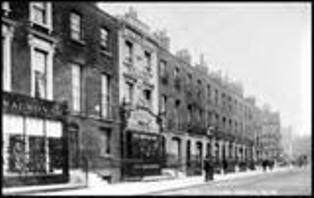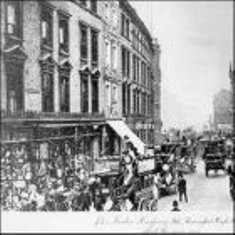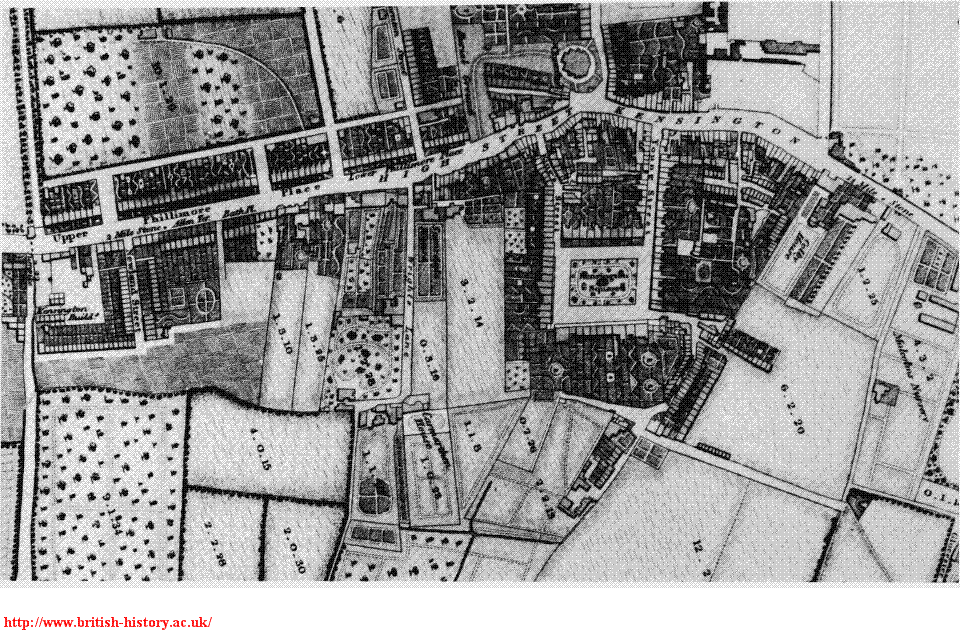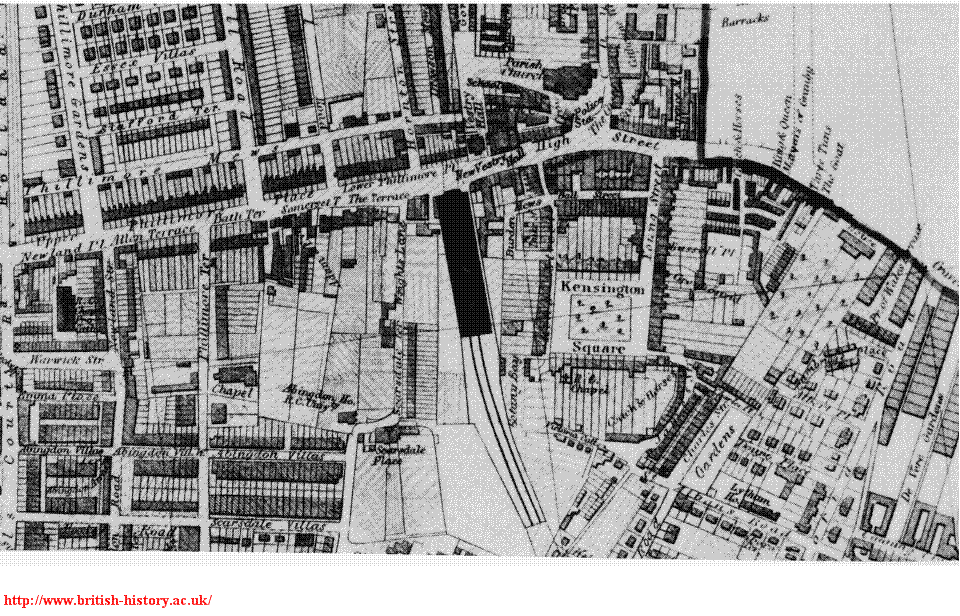Kensington High Street 1879
| John
Barker was born at Loose in Kent on 6 April 1840, the son of Joseph
Barker, a carpenter and brewer. He was an apprentice to a
Maidstone draper and later worked in drapery shops in Folkestone and
Dover before
moving to London, in 1858, to join Spencer, Turner & Boldero, furnishers and drapers of Lissom Grove, Marylebone (pictured right where my paternal grandfather worked - RMG). |
 |
Barker was an ambitious man and in late 1870 opened a small linen
drapery shop on his own account in Kensington. His
initial premises at 91 and 93 (then 43 and 44) Kensington High Street,
recently rebuilt under the Kensington improvement scheme, quickly
proved inadequate and, by the end of 1870, Barker had annexed 26 and 28
Ball Street . In 1871 he moved into 87 Kensington High Street.
The following year he acquired the stock and premises of a
draper at 89 Kensington High Street and 24 Ball Street which were, in
1873, extended into a newly acquired parcel of land behind 85 and 87
Kensington High Street. In 1880 Barker also took over 77 Kensington
High Street, 14 and 16 Ball Street . Later the same year he
purchased 75 Kensington High Street, the stock in a trade of a grocer.
From
the outset Barker had envisaged the creation of a vast store selling a
huge range of goods, and accordingly took every opportunity to acquire
the leases and freeholds of adjoining premises. By 1880 he was trading
in fifteen shops and boasted an annual turnover of £150,000, almost
four times the invested capital, and an annual profit of £8,500. The
expansion of the business continued unabated with the acquisition of 95
and 97 Kensington High Street, on the corner of King Street, in
1885, and the purchase of the former London and County Bank and two
shop premises at 67-71 Kensington High Street, in 1888.
The
following year 63 and 65 Kensington High Street, 2, 4 and 6 Young
Street and 6 Ball Street were purchased and immediately pulled down to
make way for a handsome six-storey building, with a high mansard roof,
offering some 30,000 square feet of floor space. This new wing was
completed in December 1889.
By 1895, save for two
shops (numbered 73 and 85), the company owned every property between
King Street and Young Street. The growth of the business continued with
the rebuilding of the Ball Street property in 1897, and acquisition of numbers 48½, 52, 54 and 56 on the
north side of Kensington High Street in 1898. In 1900, 73 Kensington
High Street was finally acquired and negotiations successfully
concluded with London County Council for the provision of a building
lease for a site with a 440-foot frontage on to the north side of
Kensington High Street and two new side streets. Soon afterwards plans
were laid for a large warehouse with flats above, along the lines of
Harrods’ recent development in Knightsbridge, and work began on
rebuilding 42-60 Kensington High Street.


